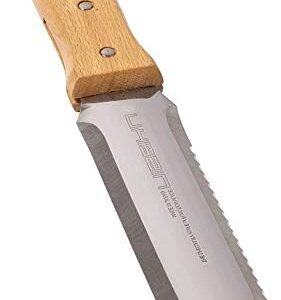Have you ever wanted to create a backyard paradise for wildlife? With a little bit of effort and planning, you can transform your garden into a haven for birds, bees, butterflies, and other creatures. Not only will you be helping the environment, but you’ll also be creating a peaceful and beautiful space for yourself to enjoy.
One of the first steps in maximizing your garden’s potential as a wildlife haven is to plant a variety of native plants. Native plants provide food and shelter for local wildlife, and they are adapted to your region’s climate and soil conditions. By incorporating a diverse selection of native plants into your garden, you can attract a wide range of birds, butterflies, and other pollinators.
When choosing plants for your garden, consider selecting a mix of flowers, shrubs, and trees that bloom at different times of the year. This will ensure that there is always a food source available for wildlife throughout the seasons. Additionally, be sure to include plants with a variety of shapes and sizes, as different species of wildlife have different preferences for habitat.
In addition to planting native plants, providing water sources for wildlife is essential for creating a thriving habitat. Birdbaths, ponds, and even shallow dishes filled with water can attract a variety of animals to your garden. Not only will these water sources provide a much-needed drink for wildlife, but they can also serve as a place for animals to bathe and cool off in the hot summer months.
Another way to maximize your garden’s potential as a wildlife haven is to create habitat structures such as birdhouses and bee hotels. These structures provide shelter and nesting sites for birds, bees, and other wildlife, allowing them to thrive in your garden. Birdhouses can attract a variety of bird species, while bee hotels provide nesting sites for solitary bees, which are important pollinators for many plants.
To further enhance your garden’s appeal to wildlife, consider creating a compost pile or adding mulch to your garden beds. Compost piles provide a food source for insects and other small animals, while mulch provides shelter for beneficial insects and helps retain moisture in the soil. Both of these practices can help create a more diverse and healthy ecosystem in your garden.
Finally, limit the use of pesticides and herbicides in your garden to protect the wildlife that calls it home. Chemicals can be harmful to insects, birds, and other animals, so it’s important to use them sparingly and opt for natural alternatives whenever possible. By practicing organic gardening methods, you can create a safe and healthy environment for wildlife to thrive.
In conclusion, creating a wildlife-friendly garden is a rewarding and fulfilling way to connect with nature and help support local wildlife populations. By incorporating native plants, providing water sources, creating habitat structures, and practicing organic gardening methods, you can maximize your garden’s potential as a haven for wildlife. Not only will you be providing a valuable resource for birds, bees, butterflies, and other creatures, but you’ll also be creating a beautiful and peaceful space for yourself to enjoy. So go ahead, roll up your sleeves, and start transforming your garden into a wildlife paradise today!






